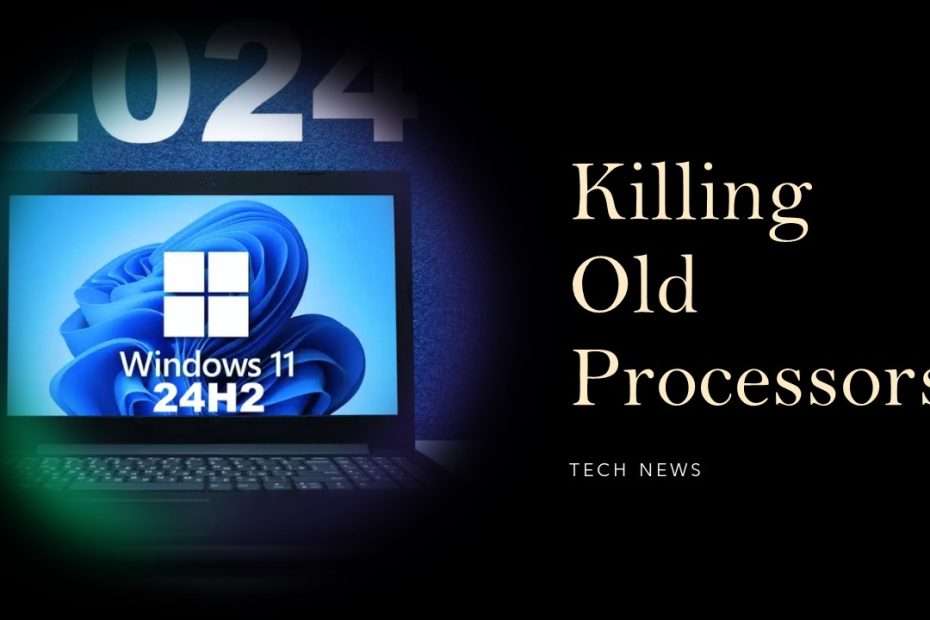Microsoft is preparing for the next significant upgrade to Windows 11 as it approaches its third anniversary. Building on the system requirement policy introduced in 2021, the upcoming Windows 11 24H2 release will no longer support PCs using certain older CPUs. This means that processors lacking the SSE4.2 instruction set will be blocked from installing the new update. If your PC falls into this category, it may be time to consider upgrading to a newer processor or device to continue receiving Windows 11 updates and support.
With the latest developments in Windows 11, Microsoft is enforcing stricter compatibility requirements. In the Canary build 26058, a new “hard” compatibility block mandates that users must have a CPU supporting the POPCNT (population count) instruction to boot the operating system. This means users without this CPU feature will not be able to run Windows 11. Additionally, in the more recent preview build 26063, another compatibility block has surfaced. This build introduces support for Wi-Fi 7 and officially requires proper support for SSE4.2 CPU instructions, further narrowing the range of CPUs that can effectively run Windows 11.

Introduced by Intel in 2006 with its Penryn CPUs (Core 2), SSE4 is a SIMD (Single Instruction, Multiple Data) extended instruction set. The initial SSE4.1 extended set added 47 new instructions to enhance CPU capabilities. Following this, a second instruction subset known as SSE4.2 was introduced in Nehalem-based processors, which were released in 2008. These instructions brought further improvements to processor performance and efficiency.
SSE4.2 instructions, introduced in processors after 2008, are optimized for character search and comparison on two operands of 16 bytes simultaneously. This capability significantly speeds up tasks such as parsing XML documents and accelerating CRC32 computation, particularly beneficial for certain data transfer protocols. However, it’s important to note that CPUs released before the first generation of Intel Core i5 and i7 CPUs do not include support for SSE4.2 instructions.
With the introduction of the 26063 preview build, a new “BlockedBYSSE4.2” value has been added to the compatibility blocks stored within the Windows registry. This addition further solidifies the requirement for SSE4.2 instructions, making it clear that systems without this instruction set will not be able to run the operating system. Users who have attempted to install this build on older PCs have confirmed that the OS cannot run on CPUs lacking SSE4.2 instructions. This compatibility block is a deliberate move by Microsoft to ensure that Windows 11 operates optimally on systems with the necessary hardware capabilities.
For those considering updating to Windows 11 or installing the 26063 preview build, it is essential to verify that your CPU supports SSE4.2 instructions. This information can typically be found in the specifications of your processor. If your CPU lacks SSE4.2, it will be blocked from installing the latest Windows 11 updates, including the 26063 preview build.
Microsoft’s plans regarding forced SSE4.2 support in Windows codebase remain uncertain at this stage. Unlike the previously introduced “soft” compatibility blocks of Windows 11, such as TPM and Secure Boot, which were and still are easily bypassed, SSE4.2 support presents a more rigid requirement. This presents a significant change as it may limit the cost-effective upgrade opportunities for owners of older PC hardware. Whether Microsoft will maintain this stricter stance on SSE4.2 compatibility or introduce workarounds for users with incompatible CPUs is yet to be seen.
For users with older hardware contemplating a move to Windows 11, the requirement for SSE4.2 support poses a potential hurdle. Unlike TPM and Secure Boot, which could be addressed with relatively straightforward workarounds, the lack of SSE4.2 instructions in CPUs might necessitate hardware upgrades for those wanting to use the latest Windows version. This highlights the importance of checking the compatibility of your system components before attempting to upgrade, as unsupported hardware could lead to installation issues or prevent the OS from running properly.
Maybe you liked other interesting articles?

